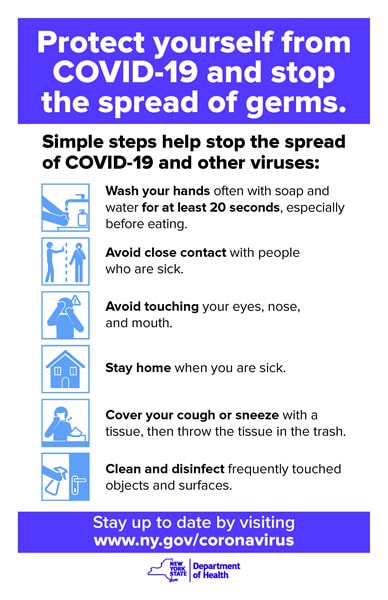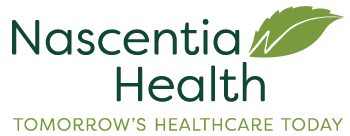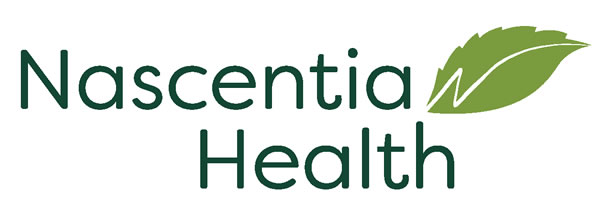COVID-19 cases and deaths are rising across the United States. We all must remain vigilant to stop the spread of this dangerous virus.
The best way to prevent and slow down transmission is to be well informed about the COVID-19 virus, the disease it causes and how it spreads.
COVID-19 Frequently Asked Questions
COVID-19 Basics
Coronaviruses are a family of viruses that cause mild illnesses like a cold, to more serious illnesses like pneumonia. The Novel Coronavirus (COVID-19) is a new rapidly spreading coronavirus (or respiratory illness).
Most people infected with the COVID-19 virus will experience mild to moderate respiratory illness and recover without requiring special treatment. Older people, and those with underlying medical problems like cardiovascular disease, diabetes, chronic respiratory disease, and cancer are more likely to develop serious illness. Pregnant people are also at increased risk for severe illness.
Children can be infected with the virus that causes COVID-19 and can get sick with COVID-19. Most children with COVID-19 have mild symptoms or they may have no symptoms at all (“asymptomatic”). Fewer children have been sick with COVID-19 compared to adults. However, children with certain underlying medical conditions and infants (less than 1 year old) might be at increased risk for severe illness from COVID-19. Some children have developed a rare but serious disease that is linked to COVID-19 called multisystem inflammatory syndrome (MIS-C).
- The virus that causes COVID-19 most commonly spreads between people who are in close contact with one another (within about 6 feet, or 2 arm lengths).
- It spreads through respiratory droplets or small particles, such as those in aerosols, produced when an infected person coughs, sneezes, sings, talks, or breathes.
- These particles can be inhaled into the nose, mouth, airways, and lungs and cause infection. This is thought to be the main way the virus spreads.
- Droplets can also land on surfaces and objects and be transferred by touch. A person may get COVID-19 by touching the surface or object that has the virus on it and then touching their own mouth, nose, or eyes. Spread from touching surfaces is not thought to be the main way the virus spreads.
- It is possible that COVID-19 may spread through the droplets and airborne particles that are formed when a person who has COVID-19 coughs, sneezes, sings, talks, or breathes. There is growing evidence that droplets and airborne particles can remain suspended in the air and be breathed in by others, and travel distances beyond 6 feet (for example, during choir practice, in restaurants, or in fitness classes). In general, indoor environments without good ventilation increase this risk.
COVID-19 affects different people in different ways. Most infected people will develop mild to moderate illness and recover without hospitalization. On average it takes 5–6 days from when someone is infected with the virus for symptoms to show, however it can take up to 14 days.
Most common symptoms:
- fever
- dry cough
- tiredness
Less common symptoms:
- aches and pains
- sore throat
- diarrhea
- conjunctivitis
- headache
- loss of taste or smell
- a rash on skin, or discoloration of fingers or toes
Serious symptoms:
- difficulty breathing or shortness of breath
- chest pain or pressure
- loss of speech or movement
Seek immediate medical attention if you have serious symptoms. Always call before visiting your doctor or health facility.
COVID-19 Prevention
- Wash hands often with soap and warm water for at least 20 seconds, especially before eating. Use an alcohol-based hand sanitizer if soap and water are not available.
- Avoid close contact with people who are sick.
- Avoid touching your eyes, nose or mouth.
- Stay home when you are sick.
- Cover your cough or sneeze with a tissue, then throw the tissue in the trash. If you do not have a tissue, cough or sneeze into your upper sleeve or elbow, not your hands.
- Do not shake hands. Instead wave or elbow bump.
- Monitor your heath more closely than usual for cold or flu symptoms.
- Clean and disinfect frequently touched objects and surfaces.
- Get the flu shot. Although the flu shot will not protect you from COVID-19, it will help prevent the flu which has similar symptoms to this coronavirus.
- Do not go to travel ban countries. Click here for the latest information on the Coronavirus and travel.
- Store water, food, medications and other essentials. Create a household plan of action in case of illness in the household or disruption of daily activities due to COVID-19 in the community. Consider a 2-week supply of prescription and over the counter medications, food, water and other essentials.
- Stay updated. For the latest information on COVID-19 visit the NY Department of Health and the Centers for Disease Contol and Prevention websites.

Wear masks in public settings when around people not living in your household and particularly where other social distancing measures are difficult to maintain, such as grocery stores, pharmacies, and gas stations. Masks may slow the spread of the virus and help people who may have the virus and do not know it from transmitting it to others. They also provide some protection to the wearer.
COVID-19 can be spread by people who do not have symptoms and do not know that they are infected. That’s why it’s important for everyone to practice social distancing (staying at least 6 feet away from other people) and wear masks in public settings. Masks provide an extra layer to help prevent the respiratory droplets from traveling in the air and infecting other people and also provide some protection to the wearer.
The masks recommended are not surgical masks or N-95 respirators. Those are critical supplies that must continue to be reserved for healthcare workers and other medical first responders, as recommended by current CDC guidance.
Most people who get COVID-19 will be able to recover at home. Those who are recovering at home and their caregivers should follow the below directions:
- Stay home when you are sick, except to get medical care.
- Use a separate room and bathroom for sick household members (if possible).
- Wash your hands often with soap and water for at least 20 seconds, especially after blowing your nose, coughing, or sneezing; going to the bathroom; and before eating or preparing food.
- If soap and water are not readily available, use an alcohol-based hand sanitizer with at least 60% alcohol. Always wash hands with soap and water if hands are visibly dirty.
- Provide your sick household member with clean disposable facemasks to wear at home, if available, to help prevent spreading COVID-19 to others. Everyone else should wear masks at home. Masks offer some protection to the wearer and are also meant to protect those around the wearer, in case they are infected with the virus that causes COVID-19.
- Clean the sick room and bathroom, as needed, to avoid unnecessary contact with the sick person.
However, some people may need emergency medical attention. Watch for symptoms and look for emergency warning signs* for COVID-19. If someone is showing any of these signs, seek emergency medical care immediately:
- Trouble breathing
- Persistent pain or pressure in the chest
- New confusion
- Inability to wake or stay awake
- Bluish lips or face
*This list is not all possible symptoms. Please call your medical provider for any other symptoms that are severe or concerning to you.
Call 911 or call ahead to your local emergency facility: Notify the operator that you are seeking care for someone who has or may have COVID-19.
- The best way to protect yourself and others is to stay home for 14 days if you think you’ve been exposed to someone who has COVID-19. Check your local health department’s website for information about options in your area to possibly shorten this quarantine period.
- Be alert for symptoms. Watch for fever, cough, shortness of breath, or other symptoms of COVID-19.
- If possible, stay away from others, especially people who are at higher risk for getting very sick from COVID-19.
The first COVID-19 vaccines are here. While availability is limited in the initial weeks of the vaccination program, more and more New Yorkers will become eligible as the vaccine supply increases.
Two vaccines have been authorized by the FDA. The first, developed by Pfizer and BioNTech, was approved unanimously by New York State’s independent COVID-19 Clinical Advisory Task Force on December 10 and formally authorized by the FDA on December 11, 2020. The second, developed by Moderna, was authorized by the FDA and approved unanimously by the Clinical Advisory Task Force on December 18, 2020.
While the vaccination process is underway, every one should wear a mask, social distance and avoid small and large gatherings.
COVID-19 Testing
Maybe; not everyone needs to be tested for COVID-19.
If you have symptoms of COVID-19 and want to get tested, call your healthcare provider first. Most people will have mild illness and can recover at home without medical care and may not need to be tested.
CDC has guidance for who should be tested, but decisions about testing are made by state and local health departments and healthcare providers.
You can also visit your state or local health department’s website to look for the latest local information on testing.
Antibody tests for COVID-19 are available through healthcare providers and laboratories. Check with your healthcare provider to see if they offer antibody tests and whether you should get one.
A positive test result shows you might have antibodies from an infection with the virus that causes COVID-19. However, there is a chance a positive result means that you have antibodies from an infection with a virus from the same family of viruses (called coronaviruses), such as the one that causes the common cold.
Having antibodies to the virus that causes COVID-19 might provide some protection from getting infected with the virus again. If it does, we do not know how much protection the antibodies might provide or how long this protection might last. Confirmed and suspected cases of reinfection have been reported, but remain rare.
You should continue to protect yourself and others since you could get infected with the virus again.
If you test negative, you might not have ever had COVID-19. Talk with your healthcare provider about your test result and the type of test you took to understand what your result means.
Regardless of whether you test positive or negative, the results do not confirm whether or not you are able to spread the virus that causes COVID-19. Until we know more, continue to take steps to protect yourself and others.

